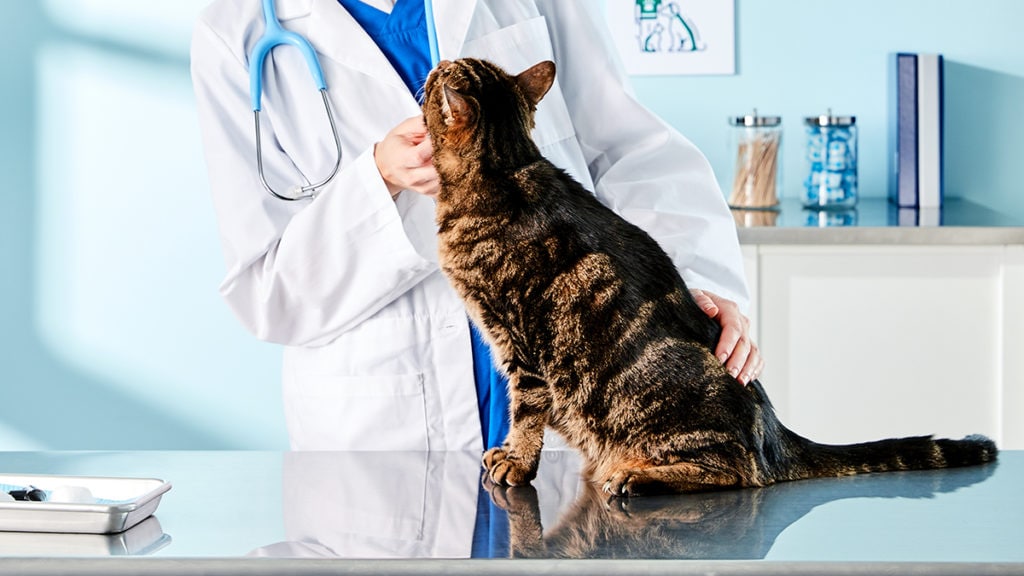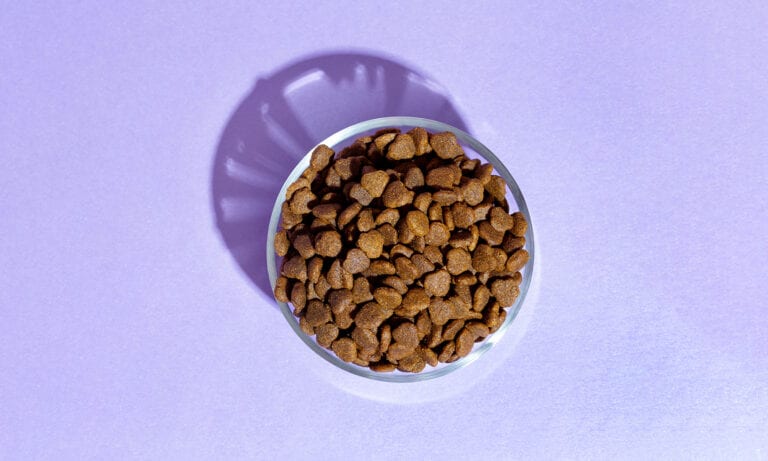Cataracts in dogs and cats is a potentially serious condition that can impair your pet’s eyesight, impact her quality of life and cause blindness. In a healthy eye, the lens appears clear. In an eye with a cataract, the lens is cloudy, blocking the passage of light to the retina.
“If there is enough blockage, then vision is impaired or reduced,” says Dr. Amy Hunkeler, DVM, DACVO, MBA, a board-certified veterinary ophthalmologist at Eye Care for Animals, which has locations in Kansas and Missouri.
Learning to spot the signs, symptoms and causes of cataracts, and understanding treatment options, can put you in a better position to provide optimal cat and dog eye care.
Signs and Symptoms of Cataracts in Dogs and Cats
If your pet’s cataract is small, she may not display any signs or symptoms, says Dr. Jessica Meekins, DVM, MS, DACVO, an assistant professor of ophthalmology at the College of Veterinary Medicine at Kansas State University in Manhattan, Kansas. As it becomes advanced, however, vision loss and a change in the appearance of the eye occur, she says.
The affected eye may appear white, cloudy or silvery, especially in the center at the pupil, says Dr. Ken Abrams, DVM, DACVO, an ophthalmologist at Angell Animal Medical Center in Boston, Massachusetts.
Also, depending on how large the pupil is in different types of lighting, “the cataract might look larger in dim light or smaller in bright light,” he says.
Because cataracts in cats and dogs can impact the animal’s ability to see, pet parents might notice behavioral changes.
If the cataract is in one eye, “sometimes the owner might note that the patient bumps into things on that side of the cataractous eye,” Dr. Abrams says. “Dogs who have a job, like those who do obedience or agility work or service dogs, might show more difficulty in doing these jobs.
“If a patient has cataracts in both eyes, the parent will likely notice the patient having a hard time overall getting around,” he continues. “Bumping into objects regularly is a typical sign of bilateral cataracts.”
These signs and symptoms don’t necessarily mean your best friend has cataracts, however.
“This can be a normal aging change called nuclear sclerosis, with only a moderate impact on vision if severe,” Dr. Hunkeler says. “Clouding can also involve other tissues, such as the cornea.”
Causes of Cataracts in Dogs and Cats
One major difference between cataracts in cats and in dogs is the underlying cause, Dr. Meekins says. The most common cause of cataracts in dogs is heredity.
“Purebred dogs pass on a genetic mutation that leads to cataract development in their offspring,” she says.
Cocker Spaniels, Siberian Huskies, Poodles, Labrador and Golden Retrievers, Boston Terriers, and Bichon Frise are some dog breeds that inherit cataract.
Inherited cataracts can occur at various ages, Dr. Abrams says, depending on the dog’s breed. In general, however, “inherited cataracts occur in young to middle-age adults, not in older patients as is commonly thought to be the case,” he says.
The second most common cause of cataracts in dogs is diabetes, Dr. Meekins says.
“Elevated sugar levels are present in the intraocular fluid, overwhelming the normal metabolic pathway of the lens,” she says. “Excess sugar byproducts are then trapped inside the lens, which causes a shift of fluid into the lens and cataract formation.”
Another good reason to manage your pet’s diabetes: “Research has shown that 75 percent of dogs with diabetes mellitus will show cataract formation within the first year,” Dr. Hunkeler says. “They can occur very quickly and cause discomfort due to lens induced uveitis (inflammation of the tissue in the uvea).”
Unlike dogs, cats very rarely develop hereditary or diabetic cataracts, Dr. Meekins says.
“Rather, they are most likely to develop cataracts as a complication of chronic uveitis,” she says.
Available Treatments for Cataracts in Dogs and Cats
One vet-recommended treatment for cataracts is topical anti-inflammatory therapy for as long as the condition persists.
“This is for the long-term comfort of the pet [and] to help maintain the eye in the healthiest possible state rather than suffer from the effects of smoldering uveitis, secondary glaucoma and/or retinal detachment,” Dr. Hunkeler says.
Talk to your vet about prescription eye care for pets.
Surgical removal of the cataract—a procedure referred to as phacoemulsification—is another vet-recommended option.
“This is performed by a veterinary ophthalmologist, after a thorough ophthalmic examination, advanced diagnostic testing to ensure the eyes and the pet are favorable candidates and in consultation with the family,” Dr. Hunkeler says. “The surgery requires specialized equipment and training, as well as commitment from the family to follow the post-surgical instructions from their doctor.
“The goal of surgery is to remove the opaque lens and restore best possible vision through an artificial lens implant,” she continues. “Cataracts do not re-grow; and thus, patients should be able to maintain functional vision for their lifetime.”
Cataract surgery for dogs and cats is available, however it’s mostly performed on dogs.
“Cats have a lower incidence of cataract development, even in the diabetic population,” Dr. Hunkeler says.
If you suspect your cat or dog has cataracts, contact your vet immediately for a consultation.
“Your doctor may determine, with your help, that immediate referral to a veterinary ophthalmologist is optimal, or the decision could be to monitor for progression,” Dr. Hunkeler says.

Paula Fitzsimmons is a freelance writer and researcher specializing in companion animal health and nutrition, and science. She’s written for clients like Prevention magazine, PetMD.com, PawCulture.com, Parrots magazine, and University of Texas-Arlington. She lives in Madison, Wisconsin with her husband and feathered family members, including parrots Whit and Sweetpea.
Featured Image: Chewy Studios
Share:









